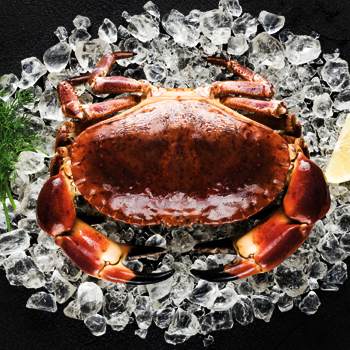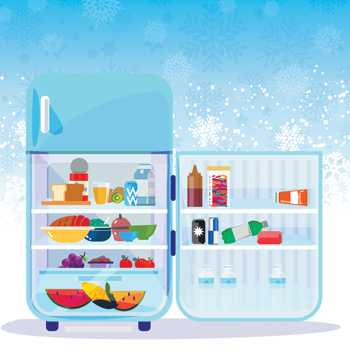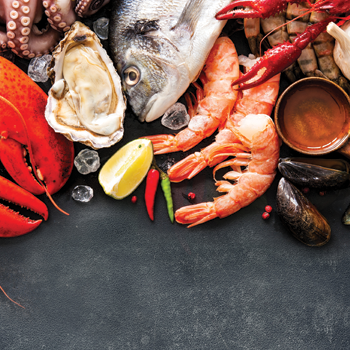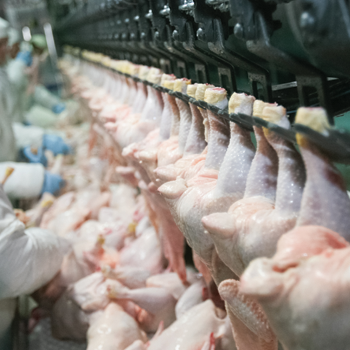ธุรกิจห่วงโซ่ความเย็นของจีนกำลังเติบโตท่ามกลางการเชื่อมโยงที่ไร้ประสิทธิภาพ
By: Barry Hochfelder
www.foodlogistics.com
จากการเปลี่ยนผ่านเศรษฐกิจที่ขับเคลื่อนโดยการผลิตไปสู่ผู้บริโภคของจีน ตลอดจนการขยายตัวมากขึ้นและแข็งแกร่งขึ้นของประชากรกลุ่มรายได้ปานกลางนั้น ส่งผลให้มีความต้องการบริโภคอาหารทั้งผลิตภัณฑ์อาหารสด ยาและเวชภัณฑ์ และอาหารที่มีอายุการเก็บรักษาสั้นในปริมาณที่เพิ่มมากขึ้นตามไปด้วย แต่น่าเสียดายที่จีนมีระบบห่วงโซ่ความเย็นที่มีประสิทธิภาพไม่เพียงพอ อีกทั้งธุรกิจห่วงโซ่ความเย็นในแต่ละพื้นที่ยังกระจัดกระจายและให้บริการได้ไม่ทั่วถึงจึงไม่สามารถเก็บรักษาสินค้าเหล่านั้นให้ดีได้
จีนจัดว่าเป็นตลาดส่งออกสินค้าเกษตรที่ใหญ่ที่สุดของสหรัฐอเมริกา โดยมีการส่งออกสินค้าเกษตรจากสหรัฐอเมริกามาจีน คิดเป็นร้อยละ 17 ทั้งที่ผลผลิตทางการเกษตรของจีนเองกว่าร้อยละ 10 มีมูลค่าเกือบ 1.4 ล้านล้านเหรียญสหรัฐ อย่างไรก็ตาม การขยายระบบห่วงโซ่ความเย็นไปในพื้นที่ต่างๆ อย่างทั่วถึงในจีนนั้นเกิดขึ้นได้ยาก เนื่องจากจีนเป็นประเทศที่มีขนาดใหญ่และมีจำนวนประชากรมาก ประกอบกับการขาดสาธารณูปโภคและการขนส่งพื้นฐานในหลายพื้นที่ที่อยู่ห่างไกล
ข้อมูลจากที่ปรึกษาด้านธุรกิจและการจัดการธุรกิจระหว่างประเทศ L.E.K. ระบุว่าธุรกิจห่วงโซ่ความเย็นของจีนเติบโตขึ้นมากกว่าร้อยละ 20 ในรอบ 5 ปีที่ผ่านมา โดยมูลค่าตลาดเติบโตขึ้นจาก 80 พันล้านหยวน (11.73 พันล้านเหรียญสหรัฐ) ในปี 2554 เป็น 160 พันล้านหยวน (23.5 พันล้านเหรียญสหรัฐ) ในปี 2558 ทั้งนี้ L.E.K. ได้คาดการณ์ว่าว่าอุตสาหกรรมห่วงโซ่ความเย็นของจีนจะมีมูลค่าสูงถึง 400 พันล้านหยวน หรือประมาณ 58.6 พันล้านเหรียญสหรัฐ ภายในปี 2563 โดยธุรกิจการขนส่งจะมีมูลค่าการตลาดคิดเป็นร้อยละ 40 ธุรกิจห้องเย็นร้อยละ 30 ส่วนที่เหลือคือมูลค่าธุรกิจที่เกี่ยวข้องกับภาคการบริการอื่นๆ ในห่วงโซ่ความเย็น
As China continues its transition from a manufacturing-led to consumer-led economy, and its middle class grows larger and stronger, the desire for fresh foods, pharmaceuticals and other perishables is growing along with it. Unfortunately, the Chinese suffer from a fragmented, inefficient cold chain that can’t keep up.
China accounts for 17 percent of U.S. agriculture exports, making it the largest agriculture export market for the United States. At nearly $1.4 trillion, agriculture comprises more than 10 percent of the Chinese economy, but the country’s massive size and population, along with a lagging infrastructure in some of its more remote areas, make it difficult to expand cold chain.
The Chinese cold chain market has grown more than 20 percent over the past five years, according to research from London-based global management consulting firm, L.E.K. Consulting. The market has grown from 80 billion Ren Min Bi (RMB) or $11.73 billion in 2011 to 160 billion RMB ($23.5 billion) in 2015. L.E.K. forecasts that the cold chain industry will be valued at 400 billion RMB ($58.6 billion) by 2020, with transportation making up 40 percent of the market, cold storage at 30 percent, and the remainder of the market covering other services.









